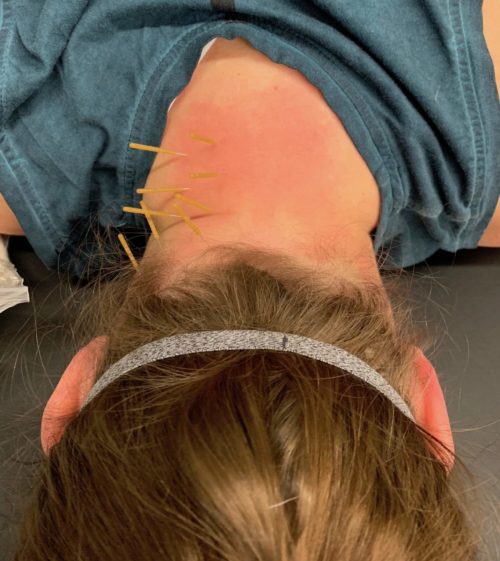
Dry Needling is developed on the foundation of modern Western medicine; however, the use of needles for healing the body dates back to at least 2,500 years ago. It is important to note that Dry Needling is NOT acupuncture and varies greatly in the desired effects on the body and musculature. Physical therapists have a proper understanding of the anatomy/physiology of the body with their undergraduate/graduate studies and can learn Dry Needling as an adjunct treatment option post-graduation.
What Kind of Needles are Used?
Dry Needling uses a small filiform needle which penetrates the skin into the underlying myofascia to release trigger points. The needles used are the same as acupuncture needles, varying in length and width depending on the treatment area.
Physical therapists wear gloves and appropriate personal protective equipment (PPE) when dry needling, consistent with Standard Precautions, Guide to Infection Prevention for Outpatient Settings, and OSHA standards. The sterile needles are disposed of in a medical sharps collector.
What is a Trigger Point?
A trigger point is a sensitive spot in a muscle which can cause pain when compressed and radiate pain to other areas in the body. Pain when compressed can also radiate through the muscle/fascia indicating myofascial pain syndrome. 1
Why Dry Needling?
Dry Needling is one of many modalities used by Physical Therapists (based on state laws). It can be used in conjunction with other modalities including cupping, soft tissue mobilization, joint mobilizations, stretching and exercise. The goal of dry needling is to help release tension produced by a trigger point, therefore “resetting” the muscle to allow for improvements in range of motion and proper muscular activation. Insertion of the needle into the muscle also improves microcirculation to that area, promoting self repair of the muscle. Dry Needling has impacts on pain and tension by restoring dysfunctional motor end plates, the areas that send nerve impulses to the muscle. Needling therefore helps produce homeostasis in the body and within the specific musculature to improve dysfunctional tissue which is contributing to dysfunction movement patterns.
- Trigger Point Definition.https://www.spinehealth.com/glossary/trigger-point. Accessed January 5, 2019.